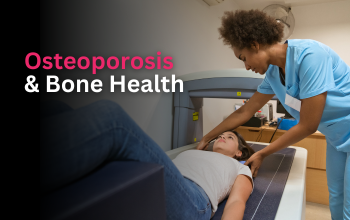The Arthritis Newsletter
Summer 2016Tips and Tricks for Travelling with Arthritis
By: Kathleen LeBlanc
 Being well prepared can help you to avoid complications and make even the most uncomfortable situations, bearable. Discuss your travel plans ahead of time with your rheumatologist. During this visit, you can:
Being well prepared can help you to avoid complications and make even the most uncomfortable situations, bearable. Discuss your travel plans ahead of time with your rheumatologist. During this visit, you can:
- Obtain a letter to carry with you stating your condition and any extra prescriptions you may need.
- Check to make sure that it is safe to travel with all medications (do they need to be refrigerated or do they require other important storage options?). Many hotels will provide a medical fridge if you need one.
- A medical alert bracelet can immediately alert responders to your condition in case of an emergency.
- Check with your doctor about any vaccinations you may need and whether they are contraindicated with your arthritis medication.
You may also wish to write a short page of your medical history, diagnosis, and medications to take along and use Google Translate to translate it into several languages, depending on your destination.
Booking
- Check online reviews of hotels to see feedback about which are the quietest or which levels are smoke-free. Call ahead to the hotel to make sure they have a firm bed and extra pillows or can accommodate other special requests.
- Plan your seat selection. An aisle seat can enable you to get up and stretch more frequently, and if you have back problems, keep your seat reclined, to take pressure off of your disks.
- Consider ordering gluten free/vegan food on the plane for healthier options.
- A hotel or hostel with a kitchenette will allow you to prepare some of your meals. This is a good way to ensure that you get the most nutrition and energy possible for each day.
Packing Tips
Come up with a list of aids that make your life with arthritis a little easier on a daily basis and pack the most important ones. For example:
- All your medications should be in your carry-on luggage in case your checked bag goes missing.
- Bring a neck pillow, or other piece of material, that will take pressure off of trouble areas.
- Pack healthy snacks – fresh fruit and veggies are allowed in your carry-on, as long as they are consumed or thrown out before reaching an international destination.
- Always pack sunscreen and a hat.
- Use small bottles to pack essential liquids and make sure that they are not too heavy.
- Pack maintenance items that you use at home, such as tennis balls for massaging sore spots.
- Wear shoes that are easy to take on and off for airport security. Pack ankle splints and/or tensor bandages if you use them.• Use compression socks for long flights.
- Bring along over-the-counter medication for eye infections and eye drops for the plane if you need them.
- Bring your handicapped sign with you if you have one.
Activity – Keep moving
- Take several stretch breaks throughout the journey and keep fully hydrated.
- Plan activities that are low-impact, but still get you moving. Walking, even for 30-45 minutes throughout the day while exploring your destination can be a great way to work in some energizing movement.
- Bring a pedometer to track how much you are walking each day. This is a good way to determine a walking goal for when you return home.
Cruise Ship Travel
- Buffets on cruise ships or at resorts can be dangerous, but usually offer lots of options, so choose wisely and pick healthier options.
- If you indulge, increase your activity so you are not taking home extra weight on your joints.
- Take advantage of the facilities and try out new classes or use equipment at the gym, or try walking in the pool.
Despite our best efforts, there can be times during travel when arthritis pain creeps up. Be sure to listen to your body and give it what it needs to help you through the pain, whether it’s a much-deserved nap, a restorative walk, a healthy meal, or plenty of water.





















































